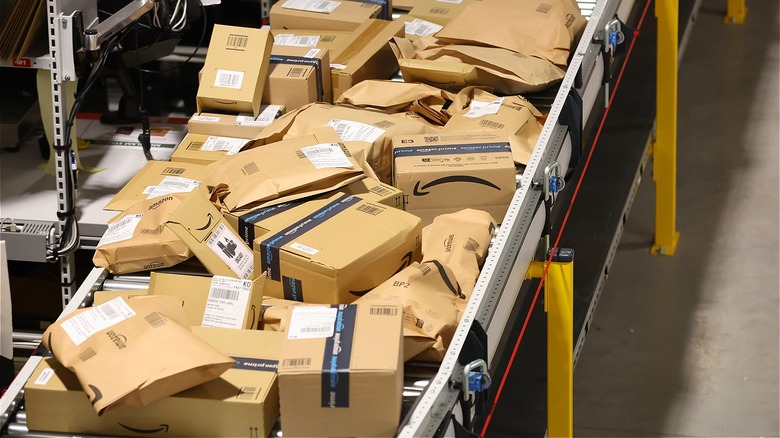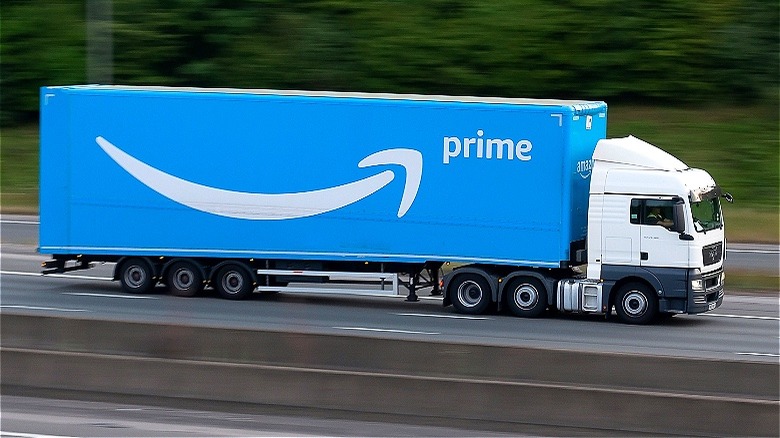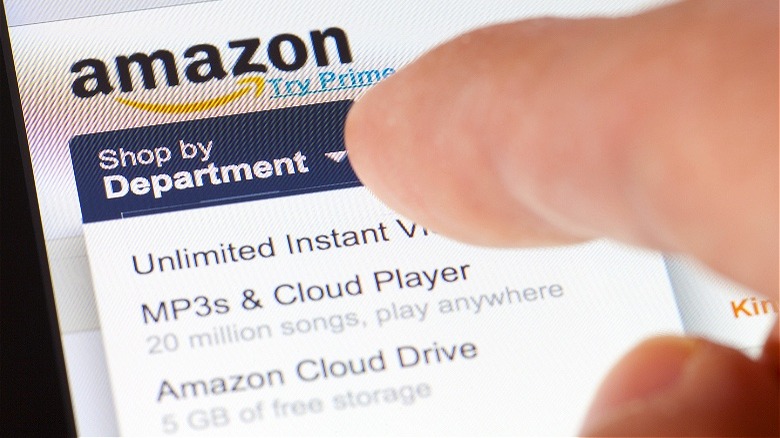How Much Do Americans Actually Spend On Amazon Each Month?
Amazon has become more than just a household name, it's become a one-stop shop for everything, from toothpaste to security cameras to e-books to streaming entertainment. On top of this, Amazon's Prime membership service boasted a whopping 180 million U.S.-based members in the first quarter of 2024, representing an 8% year-over-year increase from 2023, according to Consumer Intelligence Research Partners. It also doesn't hurt that its annual Amazon Prime Day sale has people spending an astonishing amount of money every year. However, beyond special summer sales and membership fees, you might wonder just how much people spend on their Amazon purchases every month.
According to a consumer survey from Upgraded Points, Americans spent an average of $91.75 on Amazon purchases every month in 2023 (or $1,101 for the year). However, this number noticeably changed depending on Prime membership. For instance, non-members were only likely to spend an average of $38 per month compared to Prime members who spent $110 per month. Also, 25% of surveyed consumers reported shopping on Amazon at least once a week, with over half reporting buying only Prime-specific products.
It's also worth noting different states reported heavier Amazon shopping use compared to others. Starting on the far end of the spectrum with an average of $124.22 in Amazon purchases every month is Tennessee. Meanwhile, West Virginian Amazon users only reported an average monthly spend of $56.10. Let's break down who's shopping the most (and least) on Amazon each month across the country
Prime membership spending
It's no wonder that those with Amazon Prime memberships are among the higher spenders on Amazon, especially when compared to non-member consumers. According to data from Statista, about 71% of all U.S.-based Amazon shoppers were Prime members in 2023. This means that, at a minimum, millions of Prime users are spending either $14.99 per month or $139 per year for their membership before they've ever purchased a single item. On top of this, 33% of Prime members reported shopping on Amazon at least once a week (or more) compared to the 5% of non-Prime members who reported the same shopping frequency. This is largely due to the many perks of having an Amazon Prime membership, most notably the access to free shipping on thousands of items.
However, even among Prime users, some interesting demographics emerge when it comes to who, exactly, is spending the most among members. For instance, per Upgraded Points' consumer survey, 33% of Generation X respondents reported shopping on Amazon at least once a week or more, far outpacing other generations. Older generations also outspent younger generations during Amazon Prime Day, Amazon's annual two-day summer sale that's available only to Prime members. What's more, 64% of all Prime Day shoppers were over the age of 45, according to a Capital One Shopping Research report. On Amazon Prime Day alone in 2023, consumers spent $12.9 billion (across 24 countries), with the average U.S. consumer spending $58.67 during the event. This could notably make July's monthly Amazon expenditure higher than normal.
The categories people buy
Amazon has around 350 million items (across all categories and services) available on its website at any given time. This virtual inventory is a combination of around 12 million physical items Amazon keeps in its warehouses and the millions of items available through independent sellers on Amazon's Marketplace. When it comes to e-commerce specifically, no other retailer is even close to Amazon, which accounted for 37.6% of all U.S. e-commerce spending in 2023, according to Statista. The next closest competitor was Walmart with 6.4%. While Amazon can and does employ some sneaky tricks to make you spend more money, with this many items available, it begs the question, what exactly are people buying?
According to a survey from Adlucent, 73% of respondents reported buying electronics (the largest category for Amazon shoppers), followed by home goods at 65% and books at 56%. When looking more specifically at just Prime Day sales categories, health and beauty was most popular, with 42% of shoppers purchasing from this category, followed by home and garden at 41% and electronics at 32%. However, even with millions of available items, there are still certain categories consumers tend to avoid on Amazon. For instance, only 21% reported buying food and/or grocery items, and only 14% reported buying automotive-related items. This trend carried over into 2023's Prime Day with the lowest percentage of shoppers purchasing tools and home improvement (12%) and office supplies (9%).


